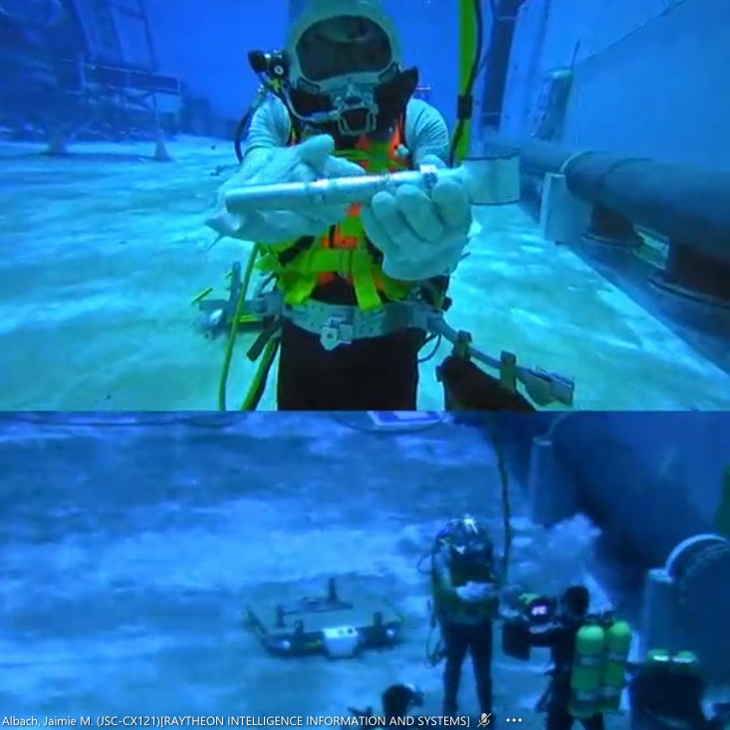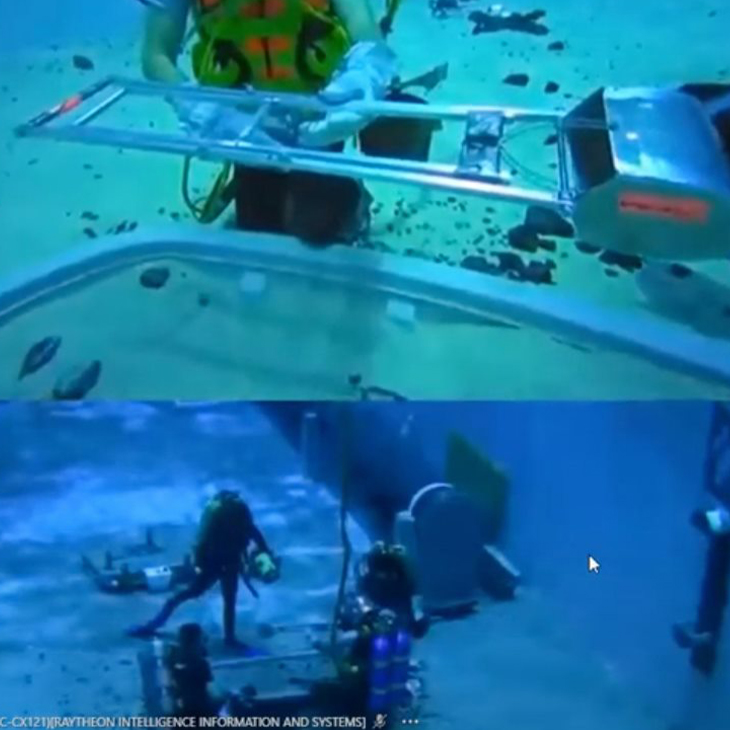
OSU Micro-G Next Tests at NASA Neutral Buoyancy Lab
Tuesday, October 13, 2020
Oklahoma State University’s College of Engineering, Architecture, and Technology’s Micro-G Next Teams had equipment tested at NASA’s Neutral Buoyancy Lab (NBL) in Houston, Texas on September 16. Team leaders Katelyn Powell and Zach Yap lead successful teams despite the uncertainty of COVID-19.
NASA asked OSU Micro-G Next teams to design a tool that meets all requirements given to them. The tools are designed to improve certain areas for NASA’s Artemis mission, which will send one woman and one man to the moon by 2024. The tools for the Artemis mission are based on the Apollo era, engineered in the 1960s.
Powell, a senior at OSU, was the leader of the Pocketed Initial Surface Collector for Eva Sampling (PISCES) team. The goal of PISCES is to collect and store data if there is a need for astronauts to quickly leave the moon.
“It was required to fit in a 6x6x2 inch volume,” Powell said. “It was given to us as a tool that will be stored in a pocket on the side of the astronaut as they are stepping off the mooner lander onto the moon.”
Powell explained that PISCES lost outreach opportunities as well as manufacturing access due to the pandemic. “Our biggest problem leading up to the test was manufacturing access,” Powell said. “We were supposed to build in labs on campus but they were closed.

We were not given access until classes started, so we had six days to manufacture.”
Yap, also a senior at OSU, was the leader of the Tolerant Interplanetary Grabber of Things (ToNGS) team. The goal of ToNGS is to pick up rocks without putting stress or strain on the astronaut or diver. ToNGS was able to communicate remotely with the diver during their test through Microsoft Teams.
“The testing portion itself was no different than how we would do it if we were in Houston,” Yap said. “The only thing we lacked was getting to see the facilities first hand, and some pre and post visits with the diver.”
Both Powell and Yap explain that even though testing was done remotely, the experience was not altered much because the testing was still done through screens and voice. However, teams were not able to handle the tool with the diver to show how the tools were expected to work and what to do if the tool malfunctioned.
“Trying to describe things only by being verbal was the hardest part,” Yap said. “We weren’t able to handle the tool with the diver to show them how we expected things to be used. You really have to think about what you are saying and how to describe it.”
Unlike PISCES, team ToNGS was able to manufacture its tool in Yap’s garage. This gave them a couple of months to manufacture, however, one important part of the tool was not able to be manufactured until three days before testing. ToNGS’ completed tool fits in a 36x6x5 inch box.
“Not a whole lot was different from previous years,” Yap said. “The only difference was building up to the testing. We had to work without the facilities that we are usually allowed to have. Our tool was built in my garage instead of the machine shop here on campus.”
Both tests in NASA’s Neutral Buoyancy Lab for teams PISCES and ToNGS were successful.
MEDIA CONTACT: Kaitlyn Mires | CEAT Marketing | kamires@ostatemail.okstate.edu
